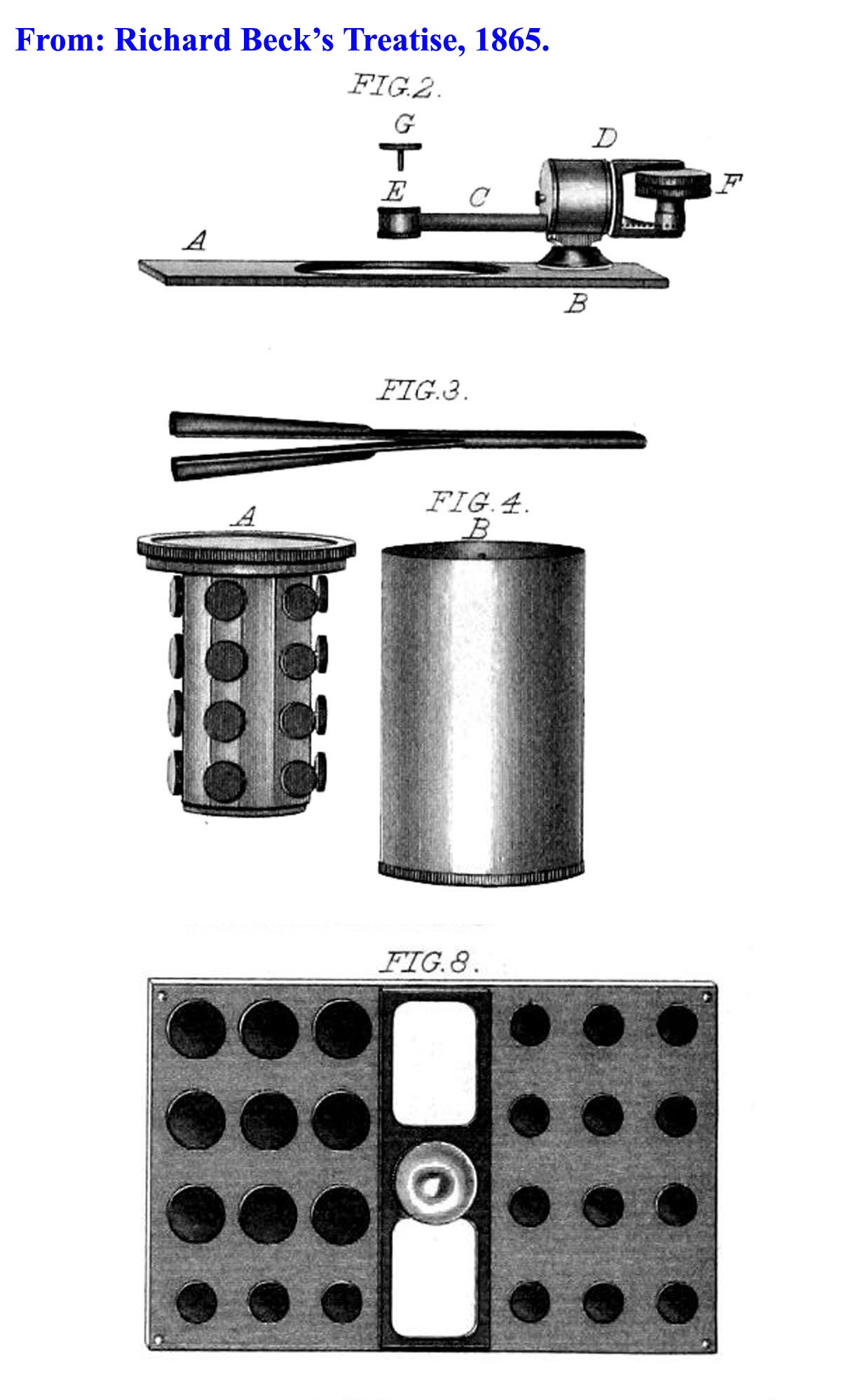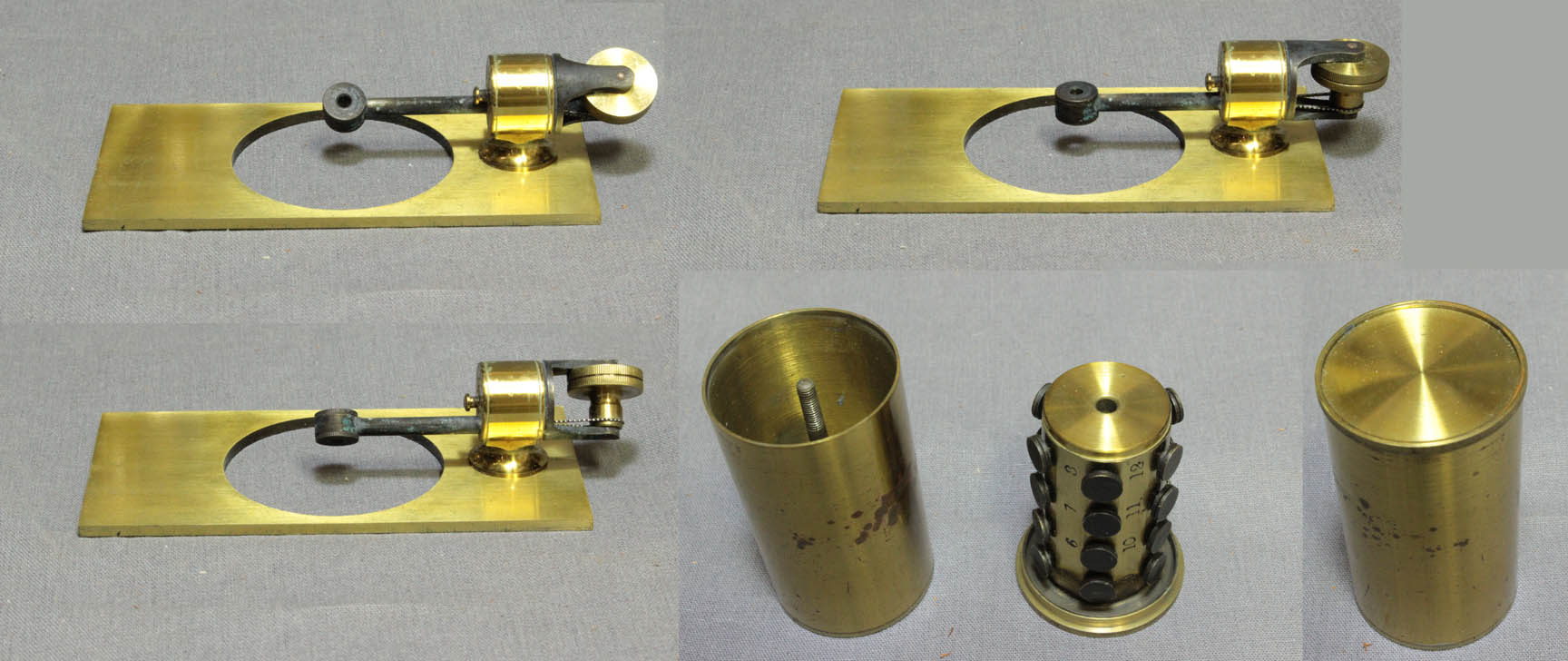HISTORY OF THIS ACCESSORY

The 'Revolving Disk Rotator* for Opaque Objects' was first reported by Richard Beck in the Transactions of the Microscopical Society of London, New Series, Volume X, 1862. In the initial description, Beck described only one way to store the disks, namely on cylinders. The first catalog of Smith Beck and Beck, and also Beck's Treatise, both from 1865, show two different options for storing the disks. One was a cylinder (figure 4 A), with each hole numbered, which fit into a cylindrical brass case(figure 4 B), similar to the cans used for objectives; this version was offered from no later than 1865 but was no longer offered in 1888. Although they were the first form of storage, the cylindrical holders were less popular, and can be used to date examples to the nineteenth century circa 1862-1887. Although they were found in the 1882 catalog, by the 1888 catalog, the cylinders were no longer offered.
The other disk storage device consisted of brass plates with holes for each disk numbered(figure 8); it also featured little legs to allow these plates to be stacked on top of one another without crushing the specimens. The rotator was offered by Beck through at least the first decade or more of the twentieth century, as is illustrated by catalog entries. The plate storage for disks continued to be offered in the catalog as long as the disk-revolver was offered into the early twentieth century. Examples with these more common disk holders cannot be dated except to the broad range(c. 1865-1912), that I noted above.
Despite its production for half a century, the rotator is uncommon today, likely because it is unsigned and unless part of a microscope outfit, would likely be a mystery object to most people unfamiliar with it-even some collectors and microscopists. Another factor contributing to its rarity is that it was rather expensive in its day. The device came highly recommended by such authorities as Carpenter(1881), who found the device very useful for the study of Foraminfera. It would also be an ideal device to study something like a three dimensional crystal.
More sophisticated apparatus to allow rotation in multiple axes with calibrated scales were later developed for petrographic work and can be seen in Daniel Kile's 'The Petrographic Microscope: Evolution of a Mineralogical Research Instrument' which was a special issue of the Mineralogical Record, published in 2003 and is still available. You can see also see Dan Kile's article on multiaxis stages.
The author would like to acknowledge the help of his good friends, Dr Joseph Zeligs, and Jim Solliday, who, as usual, were kind enough to provide very useful historical and catalog information. Their insight and historical information has been critical to improving this web site.
*Strictly speaking the earlier term that Beck himself used, rotator, would refer to the rotation of the disk on its own axis. Revolution would refer to horizontal movement of the disk with the axis at the point where the apparatus attaches to the support plate, which although possible with the device, is a less unique part of its function as even a stage forceps has this motion.
The author is very grateful to Mr Tony Smith for providing some of the photographs seen here.

